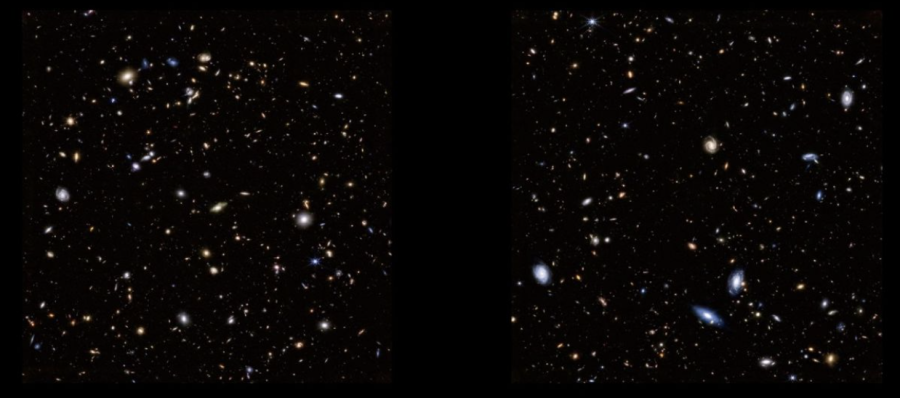Webb #5
In 2003, NASA’s Hubble Space Telescope turned toward a distant patch of the universe and snapped a historic photo, revealing a sea of galaxies. Now, 20 years later, the James Webb Space Telescope has done the same.
Pointing at the same region Hubble did, Webb managed to capture a deep field image containing thousands of galaxies, some of which formed within a billion years after the Big Bang. This youthful presence is helping astronomers understand more about the creation of early galaxies in our universe — a topic that still has several lurking mysteries.
Webb took this photo with a similar level of depth to the Hubble Space Telescope. Yet, it did so much quicker. While Hubble spent about 11 days taking the data, Webb snapped the photo in just over 20 hours. So, astronomers are not just excited about the image’s beauty, but also Webb’s ingenuity and efficiency.
Telescopes aside, this image is also generating buzz around its implications for future knowledge and studies. For example, the ionized gas detected in the data highlights areas of star formation. Michael Maseda, a professor at the University of Wisconsin-Madison stated, “Now we can separate those areas from where stars already existed,” allowing astronomers to piece together a timeline of galaxy evolution. What researchers are most excited about, however, is the discoveries to be made about the early universe. Studies like the deep field can provide valuable information in unpacking the first period of star formation, known as the reionization era. Overall, this gives astronomers a fuller picture of the timeline of galaxy formation and the universe in general.
Webb is known to be able to uncover facts about our early universe. With its powerful infrared technology, it can see farther back than anything else we’ve created. Considering this potential, it’s only a matter of time before its next image will shed light on something equally or even more intriguing than the deep field.
(he/him/his)
Roshan Mehta is a senior at Shaker High School, and this is his third year participating in the Bison. In the club, he serves as a writer...


